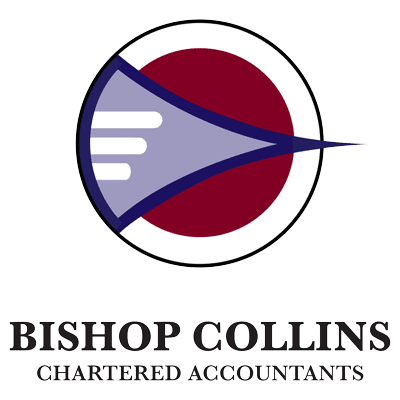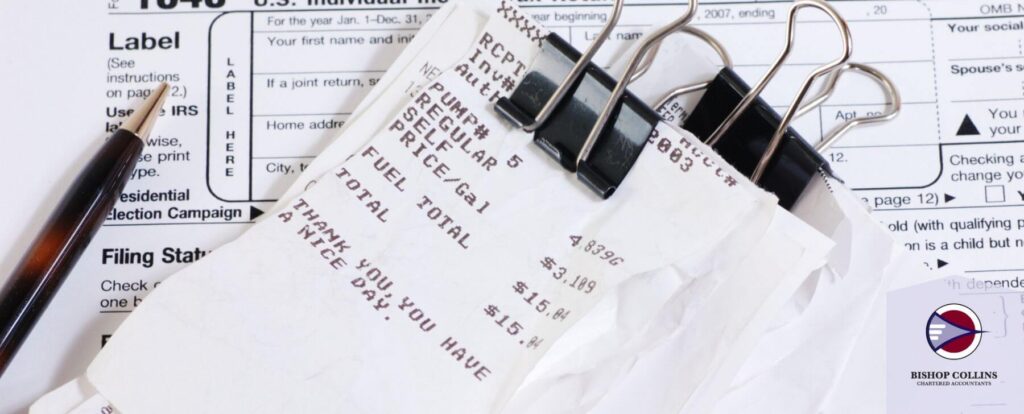As June arrives, businesses and consumers alike are familiar with the trademark End-of-Financial-Year sales (or EOFY to those in the know). For some, it’s a golden opportunity to hit the shops; for others, it’s a sign to start the often dreaded tax planning.
EOFY is very closely tied to tax planning—an essential aspect of financial management for businesses in Australia. By strategically managing your business’s tax obligations, that sinking feeling you’ve come to associate with business tax will disappear. You can minimise your business’s tax liabilities while maximising after-tax profits. In short, you can set your business up for ultimate financial and taxation success.
In this comprehensive article, we delve into the benefits of tax planning and explore effective tax planning strategies to help businesses navigate the final month of the financial year successfully.
1. Minimise Tax Liabilities
One of the primary benefits of tax planning is the ability to minimise tax liabilities. Every business owner aims to optimise their tax position, and tax planning plays a key role in achieving this goal.
The approach to your tax planning will vary based on the size and structure of your business.
At Bishop Collins, our tax planning process begins with a comprehensive review of your annual profit and a thorough calculation of your tax position. Based on this analysis, we offer customised options and valuable feedback to maximise the benefits of any available tax incentives, deductions, or offsets for the year.
By effectively implementing these strategies, substantial savings can often be achieved. It’s important to note a few things here regarding liability minimisation, some of which may apply to your business:
Cash Businesses
For businesses operating on a ‘cash basis,’ income is taxed when received, and deductions are claimed when paid. To reduce tax liabilities, a strategy could involve clearing payable bills within the financial year, reducing taxable income.
Accrual Businesses
In contrast, accrual-based businesses can claim deductions for expenses once they are incurred. However, businesses that carry stock must pay tax on closing stock balances. When placing purchase orders, focusing on overhead expenses or deductible business assets can help minimise tax obligations.
Superannuation
Superannuation is a critical aspect of tax planning. For employee super contributions, timely payment and processing before June 30th provide an easy deduction.
Business owners should also consider catch-up contribution rules and concessional contribution caps to boost their super and pay a lower tax rate.
Understanding the nuances of superannuation contributions can significantly impact tax liabilities.
Company Structure
Businesses operating as a company face different tax rates. Currently, the tax rate for small businesses in Australia is a flat 25%.
When planning taxes, it’s essential to consider both individual taxable incomes as business owners and the company’s profit.
Balancing dividend payments with the goal of long-term tax minimisation may involve increasing the company’s tax payable.
However, it’s crucial to exercise caution, as certain tax minimisation strategies can affect the company’s ability to pay franked dividends, potentially resulting in higher taxes.
Trust, Partnership, or Sole Trader Structure
Businesses operating as a trust, partnership, or sole trader should pay close attention to tax planning. These structures have their own unique considerations.
Trusts, in particular, require careful distribution planning and producing distribution minutes by June 30th. The distribution should align with the business’s profitability, aiming to optimise tax outcomes.
Prepaid Expenses
Prepaid expenses offer potential deductions for small businesses if they relate to expenses within the next 12 months. Businesses can take advantage of this deduction by prepaying eligible expenses before the financial year-end.
Temporary Full Expensing of Depreciating Assets
The temporary full expensing of depreciating assets, which ended on June 30th, 2023, provided significant tax savings during the Covid era. However, managing taxes became more complex as profits fluctuated from year to year.
Businesses should exercise caution when selling assets, as the full deduction means paying tax on the full sale price. It’s crucial to notify your accountant of all sold and purchased assets during the year and provide the appropriate documentation.
 2. Enhance Cash Flow
2. Enhance Cash Flow
Tax planning also plays a significant role in optimising cash flow for businesses. Carefully managing the timing of income recognition and expense deductions allows businesses to align their cash flows with tax obligations.
EOFY Stocktake
Conducting an End-of-Financial-Year stocktake allows businesses to convert some stock into cash, providing a cash flow boost without a significant tax burden. This extra cash flow can be allocated to other tax-deductible items like super contributions.
Income Recognition and Expense Deductions
Strategically timing the recognition of income and deductions can help businesses manage their cash flow. Deferring income recognition to the following tax year or prepaying expenses before the financial year-end can reduce immediate tax burdens and improve cash flow.
3. Reduce Tax Risk and Compliance Issues
Proactive tax planning helps businesses mitigate tax risks and ensures compliance with the Australian Taxation Office (ATO) regulations.
Staying up to date with changing tax laws enables businesses to identify potential risks, avoid penalties, and maintain good standing with the ATO.
Engaging the right accountant is paramount to ensure good compliance management.
4. Structuring and Entity Selection
When it comes to tax planning, one of the fundamental considerations is selecting the appropriate business structure. The choice between sole proprietorship (or sole trader), partnership, company, or trust can have significant implications for your tax obligations.
Each entity type comes with its own set of tax implications, advantages, and limitations. By carefully evaluating the tax consequences of each option, businesses can make informed decisions that align with their financial goals.
For instance, a sole trader may offer simplicity and flexibility, but it also means that the business owner is personally responsible for all tax liabilities. On the other hand, forming a company can provide certain tax benefits, such as the ability to distribute profits through dividends and access lower corporate tax rates.
Partnerships offer the advantage of sharing tax responsibilities among partners, while trusts can offer tax planning opportunities through income distributions and asset protection.
This thoughtful approach to structuring not only optimises tax outcomes but also lays the groundwork for effective tax planning strategies in the long run.
 5. Deduction Optimisation
5. Deduction Optimisation
Deductions can seem daunting, especially for business tax. Understanding and utilising deductions to your advantage, however, can become a major asset to the success of your EOFY tax planning and can ultimately deliver a much better after-tax return.
Identify Legitimate Deductible Expenses
To effectively optimise deductions, you’ll need to carefully review your operations and identify all legitimate business expenses that qualify for deductions. Among others, this includes:
- Costs related to rent
- Utilities
- Office supplies
- Travel expenses
- Advertising
- Professional fees
- Employee salaries
By comprehensively assessing your business expenses, you’re well-equipped to maximise your deduction potential.
Meticulous Record-Keeping
This is where a lot of people fall short in their tax planning efforts, and it’s understandable. Being organised and on-the-ball with record keeping can fall by the wayside, but it’s also essential for substantiating deduction claims and ensuring compliance.
Your business should maintain organised documentation, such as receipts, invoices, and bank statements, to provide evidence of the expenses incurred. If you’re not into the old-school method, there also plenty of easy-use apps and programs designed to make tracking deductions a whole lot easier.
Meticulous recordkeeping not only supports deduction optimisation but also facilitates smooth tax audits, if necessary.
Consult with Tax Professionals
While businesses can handle deduction optimisation on their own, consulting with a tax professional like Bishop Collins can provide valuable insights and ensure that no eligible deductions are overlooked.
Our tax professionals have the expertise and knowledge of current tax laws and regulations, enabling us to identify specific deductions that may apply to your industry or business circumstances.
We can also provide guidance on:
- How to maximise deductions while maintaining compliance
- Navigate intricate deduction rules and avoid potential pitfalls
- Identify potential red flags or areas of ambiguity
- Provide clear guidance on how to approach specific deductions
Conduct Regular Reviews and Adjustments
Deduction optimisation is an ongoing process that requires regular reviews and adjustments. As your businesses evolves, your deductible expenses may change.
Conducting periodic assessments of deductible expenses and seeking advice from tax professionals ensure that your businesses is taking advantage of all available deductions.
By staying proactive and up to date with deduction optimisation, you can maximise your business tax savings and maintain a strong financial position.
6. Capital Gains Tax Planning
For businesses involved in buying or selling assets, capital gains tax (CGT) planning is a crucial aspect of tax optimisation.
By strategically managing the timing of asset sales and leveraging available exemptions, concessions, and rollover relief provisions, businesses can effectively minimise their CGT liabilities and maximise their after-tax profits.
Timing Asset Sales
Timing plays a critical role in capital gains tax planning. Businesses can strategically plan the sale of assets to minimise CGT liabilities.
For example, if a business anticipates a significant increase in the value of an asset, it may be beneficial to delay the sale until a later tax year to take advantage of potential exemptions or concessions.
Conversely, if an asset’s value is expected to decline, selling it sooner may result in a reduced taxable gain.
Exemptions and Concessions
As a business owner, it helps to be aware of the various exemptions and concessions available to you under tax laws. For instance, certain small business concessions may allow eligible businesses to reduce or defer their CGT obligations when selling active assets.
These concessions can include the small business CGT concessions, which provide opportunities for significant tax savings. By understanding and leveraging these exemptions and concessions, you can minimise your CGT liabilities and retain more investment gains.
Rollover Relief Provisions
Rollover relief provisions provide businesses with opportunities to defer or reduce CGT liabilities when disposing of certain assets and acquiring replacement assets.
These provisions aim to facilitate business restructuring, expansion, or reinvestment. By taking advantage of rollover relief, you can defer the CGT consequences of asset sales and effectively manage your busines tax obligations while maintaining operational flexibility.
Navigating Complex Rules
Capital gains tax rules can be complex, and businesses must navigate them carefully to ensure compliance and optimise tax outcomes.
Seeking guidance from tax professionals who specialise in CGT planning can help you navigate the intricacies of the rules, identify relevant exemptions and concessions, and develop tailored strategies that align with their specific circumstances.
Tax professionals can also assist in assessing the CGT implications of different asset disposal methods, such as outright sales, rollovers, or the use of trust structures.
 7. Superannuation Planning
7. Superannuation Planning
Superannuation planning plays a vital role in tax planning for businesses, offering valuable tax advantages and long-term financial benefits.
By maximising contributions to superannuation funds, you can leverage tax deductions and take advantage of the lower tax rates applied to these contributions.
Tax Benefits of Super Contributions
Contributions made to superannuation funds are typically subject to a lower tax rate compared to other forms of income. For businesses, this presents an opportunity to reduce your overall tax liabilities while simultaneously building retirement savings.
By diverting a portion of your earnings into super contributions, your business can enjoy immediate tax benefits and enhance its financial position for the future.
Tax Deductions on Super Contributions
Your business may also be eligible for tax deductions on your superannuation contributions. These deductions can provide further relief on taxable income, helping to lower your overall business tax burden.
It’s important for businesses to understand the specific rules and limitations surrounding deductible superannuation contributions, as they may vary based on factors such as the business structure and individual circumstances. Our accountants can assist you in navigating this.
Employee Benefits
Superannuation planning can not only benefits your business but also provide a valuable employee benefit. Offering competitive super contributions as part of an employee remuneration package can help attract and retain top talent.
Additionally, you can explore salary sacrifice arrangements, where employees agree to contribute a portion of their pre-tax salary into superannuation, further enhancing their retirement savings and maximising tax advantages for both parties.
8. Tax Incentives
Tax incentives present a valuable opportunity for you to enhance your business’s tax planning strategies and foster innovation within your company.
By implementing eligible tax incentives, you can unlock potential tax savings and stimulate growth in key areas such as research and development (R&D).
In Australia, the government offers generous tax incentives specifically designed to encourage businesses to engage in innovative activities.
Research and Development (R&D) Tax Incentives
The Australian government provides substantial tax incentives to businesses involved in eligible R&D activities. These incentives aim to support businesses in their pursuit of innovation, technological advancements, and economic growth.
By carefully planning and documenting R&D activities, your business can access these incentives and enjoy significant tax savings.
Identifying Eligible R&D Activities
R&D encompasses a wide range of activities, including experimentation, hypothesis testing, prototype development, and technical problem-solving.
It’s essential to conduct a thorough assessment of your business operations and identify activities that meet the criteria for R&D tax incentives.
Collaboration and External Expertise
Collaborating with research institutions, universities, and industry experts can strengthen R&D initiatives and enhance your eligibility for tax incentives.
Partnering with external organisations can bring additional expertise and resources to drive innovation within the business.
These collaborations can also facilitate the sharing of knowledge, access to specialised equipment, and invaluable networking opportunities – all while optimising your business tax planning.
 Engage a Tax Planning Professional
Engage a Tax Planning Professional
Tax planning is a vital aspect of financial management for businesses in Australia. Compliance with the country’s high tax burden can be challenging, but strategic tax management can significantly minimise liabilities, enhance cash flow, and reduce compliance risks.
By employing effective tax planning strategies such as entity selection, deduction optimisation, capital gains tax planning, superannuation planning, and leveraging tax incentives, you can pave the way for a successful year ahead.
Interested in getting profesisonal assistance with your EOFY tax planning this year? Get in touch with our experienced team to get started.





 2. Enhance Cash Flow
2. Enhance Cash Flow 5. Deduction Optimisation
5. Deduction Optimisation 7. Superannuation Planning
7. Superannuation Planning Engage a Tax Planning Professional
Engage a Tax Planning Professional